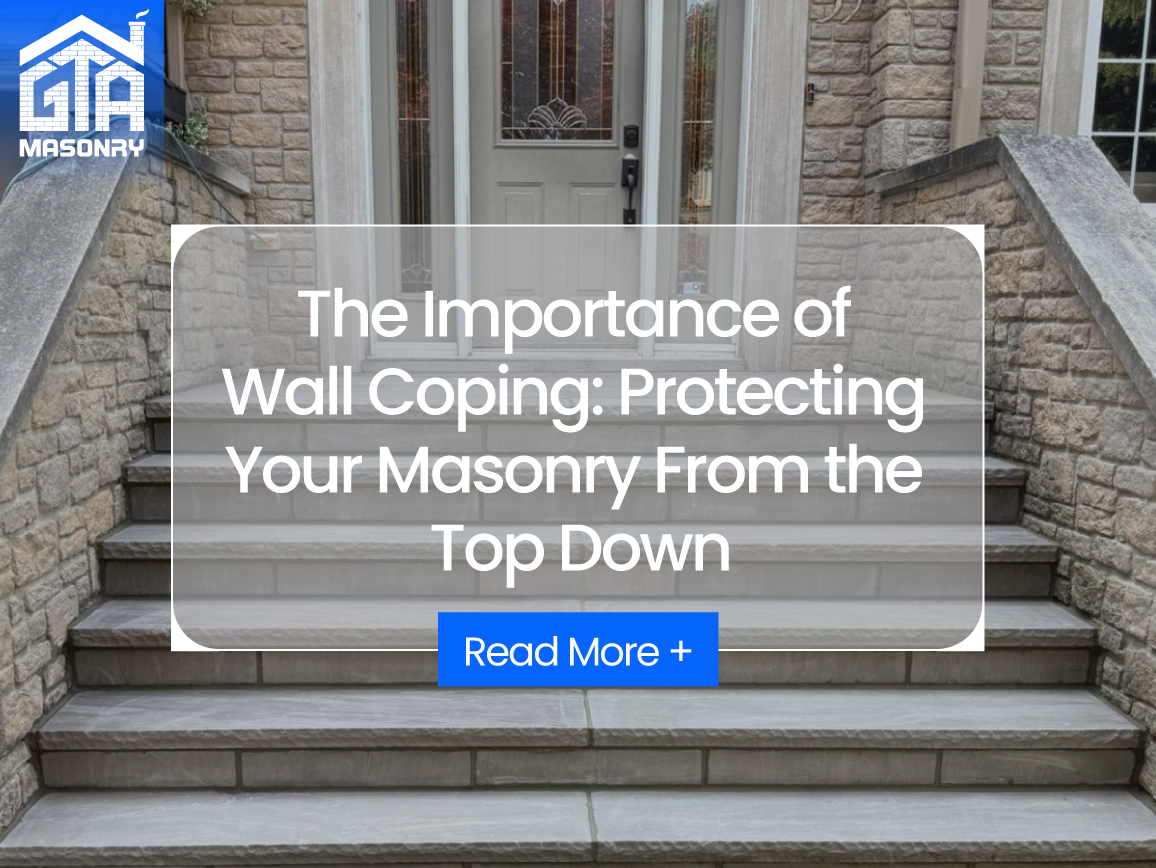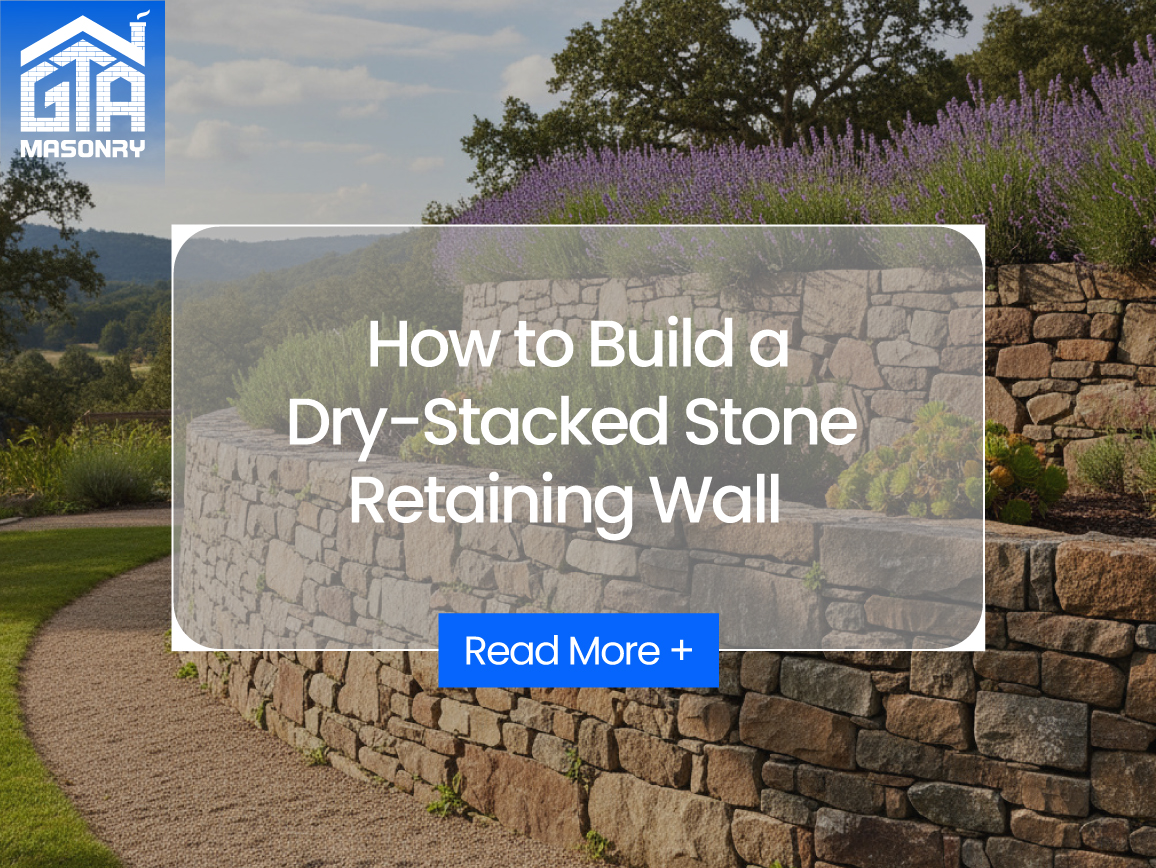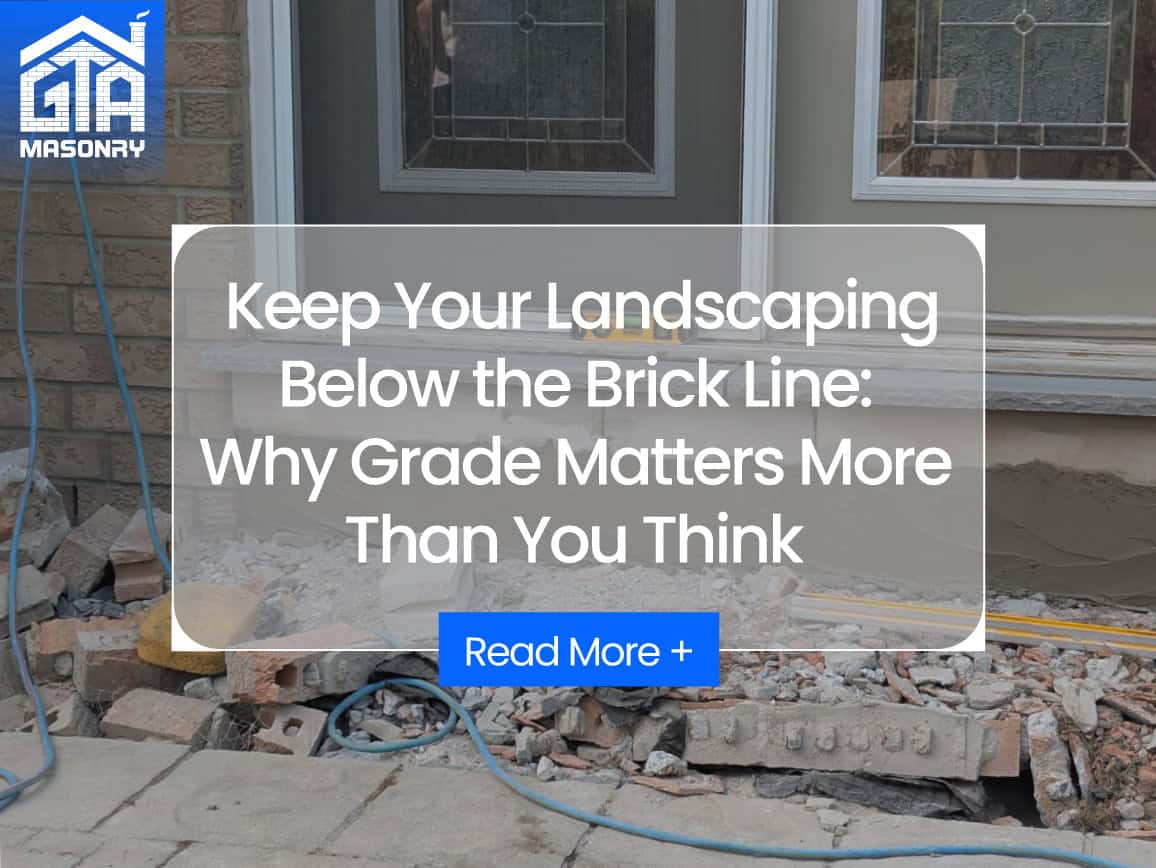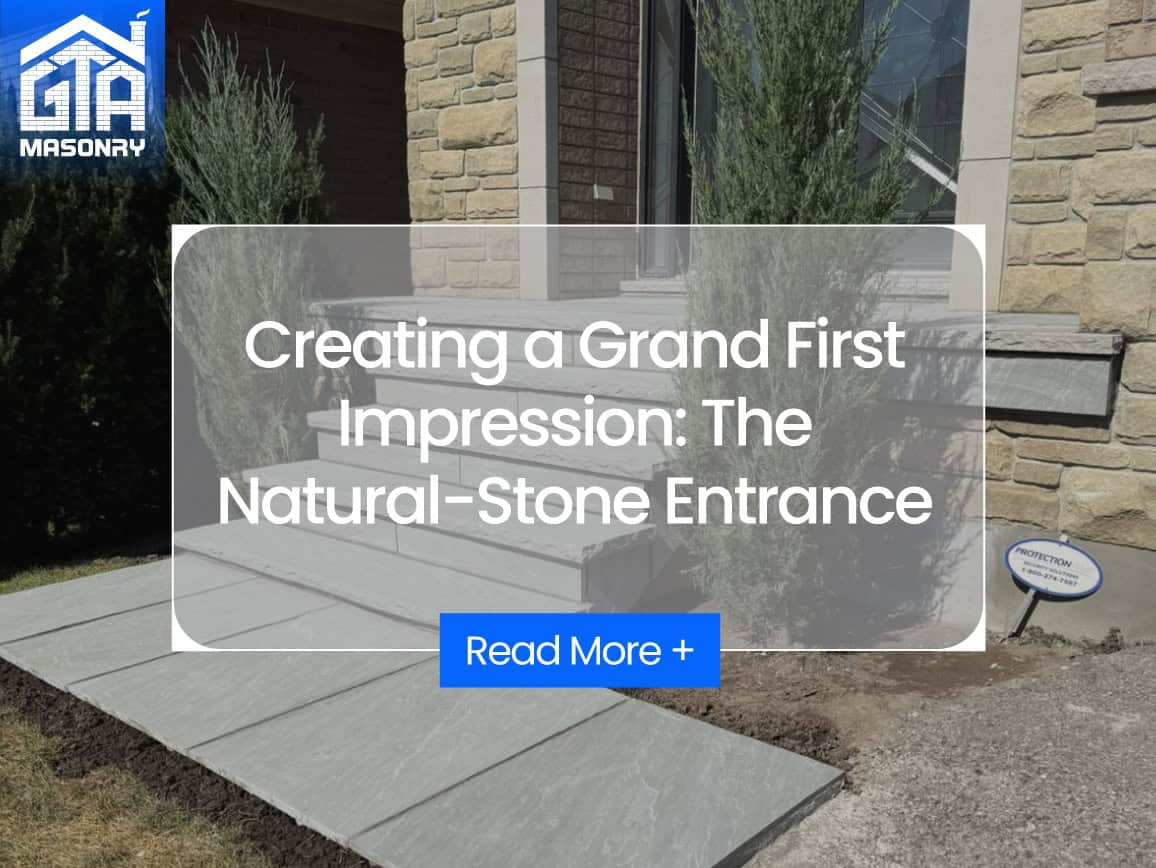The Importance of Wall Coping: Protecting Your Masonry From the Top Down

Freestanding garden walls, parapets, and retaining structures share a common enemy: water. In Toronto’s freeze-thaw climate a single season of unchecked moisture can crack mortar, stain brick faces, and even push entire wall sections out of alignment. Wall coping—the protective cap that sits on top of the masonry—may look like a decorative after-thought, but it is actually your wall’s first line of defense. GTA Masonry installs and restores coping every year for homeowners, commercial builders, and landscape architects who know that keeping water out is far cheaper than repairing damage after the fact.
What Exactly Is Wall Coping?
Coping is a continuous cap made of stone, brick, concrete, or metal that overhangs the wall on both sides and is set on a waterproof mortar bed or flashing. A slight slope funnels rain and snowmelt away while a drip groove on the underside breaks surface tension so water cannot wick back toward the vertical face. In other words, coping turns the vulnerable, porous top of a wall into a mini roof with its own eaves and gutter.
Six Reasons Coping Matters
- Prevents water penetration. By directing runoff away from mortar joints, coping stops the slow wash-out that causes efflorescence, mold growth, and internal freeze-thaw fractures.
- Protects structural integrity. UV radiation, ice, and driving rain gradually erode exposed block and brick. A durable cap shields the core materials, extending the service life of the entire wall.
- Safeguards mortar joints. Joints are the weakest link in any masonry assembly. Keeping them dry eliminates premature softening and the need for constant repointing.
- Prevents staining and discoloration. Without an overhang, dirty roof water can cascade down the wall leaving vertical streaks. Coping keeps the face clean and maintenance costs low.
- Improves safety. Properly secured coping stones add mass and stability to thin parapets, reducing the risk of loose bricks falling onto walkways or patios.
- Adds a finished architectural detail. From rugged rock-face limestone to crisp precast concrete, coping creates a clear visual transition that frames a wall and elevates curb appeal.
Choosing the Right Coping Material
Natural-Stone Coping
Limestone and sandstone have long been the gold standard thanks to their density and elegant weathering. Flagstone, in particular, pairs beautifully with garden walls and outdoor kitchens. If you are upgrading or adding a stone cap, GTA Masonry’s flagstone patio service team can source oversized slabs, custom cut them to your wall width, and hand-finish the edges for a seamless look.
Precast Concrete Coping
Precast concrete units offer consistent sizing, integral drip edges, and a variety of dye options that mimic natural stone at a lower price point. Reinforced pieces are ideal for long parapet runs on flat-roof buildings.
Clay Brick Coping
Brick-on-edge units create a traditional appearance but demand meticulous installation and frequent sealing because of their higher absorption rate. They are best reserved for heritage restorations where matching existing brickwork is critical.
Metal & Composite Coping
Aluminum, stainless steel, and specialized PVC caps are often used on commercial curtain walls. While lightweight and fast to install, they require an underlying wood or masonry substrate and precise flashing details to remain watertight.
Design & Installation Best Practices
- Slope: Aim for a 1:12 pitch (≈5°) away from the wall’s centerline.
- Overhang: A minimum of 1 inch (25 mm) on each side ensures runoff clears the face.
- Drip groove: Rout a ½ inch (12 mm) relief ⅜ inch (10 mm) from the edge underneath the coping.
- Joint treatment: Use non-shrink, waterproof masonry grout or concealed continuous flashing to prevent cap uplift during freeze-thaw expansion.
- Movement joints: On walls longer than 20 ft (6 m) include flexible sealant joints to absorb thermal movement without cracking the cap.
Maintenance Tips
A well-built coping system is nearly maintenance free, but a quick annual inspection pays dividends:
- Look for hairline cracks, open mortar joints, or missing drip edges.
- Check that cap sections remain firmly bonded; gentle tapping should produce a solid sound, not a hollow ring.
- Clear vegetation and debris that can trap moisture against the coping or wall face.
- Re-seal porous materials (brick and some sandstones) every 5–7 years with a breathable silane-siloxane sealer.
Warning Signs Your Coping Needs Attention
- Water stains or white efflorescence lines just below the cap.
- Spalled bricks or popped mortar joints on the top course.
- Visible gaps between coping units or between the coping and wall.
- Loose stones that shift under light hand pressure.
Ignoring these indicators can allow water to infiltrate deeper into the structure, resulting in costly structural repairs or complete wall reconstruction.
Why Partner With GTA Masonry?
As a toronto masonry contractor trusted across the GTA, we combine old-world craftsmanship with modern building science. Whether you need new wall coping for a backyard retaining wall, a parapet restoration on a commercial block, or an elegant stone cap that complements a luxury landscape design, our certified masons deliver precision work that stands the test of time.
Final Thoughts
Wall coping is not merely decorative—it is a critical component that safeguards the health, appearance, and longevity of every masonry wall. Investing in high-quality materials and proper installation today means fewer repairs, cleaner facades, and stronger structures tomorrow. Reach out to GTA Masonry for a free assessment and discover how the right coping solution can protect—and elevate—your property for decades to come.
Get your Masonry Project completed with GTA Masonry for dreamy results you wont be able to stop admiring.







Hours of Operation
Monday - Sunday
8:00 AM - 8:00 PM

